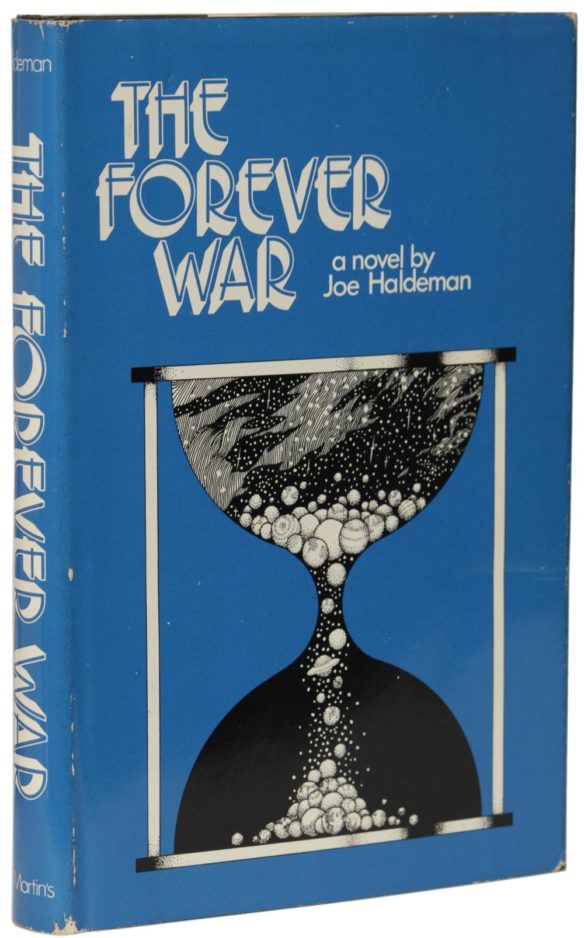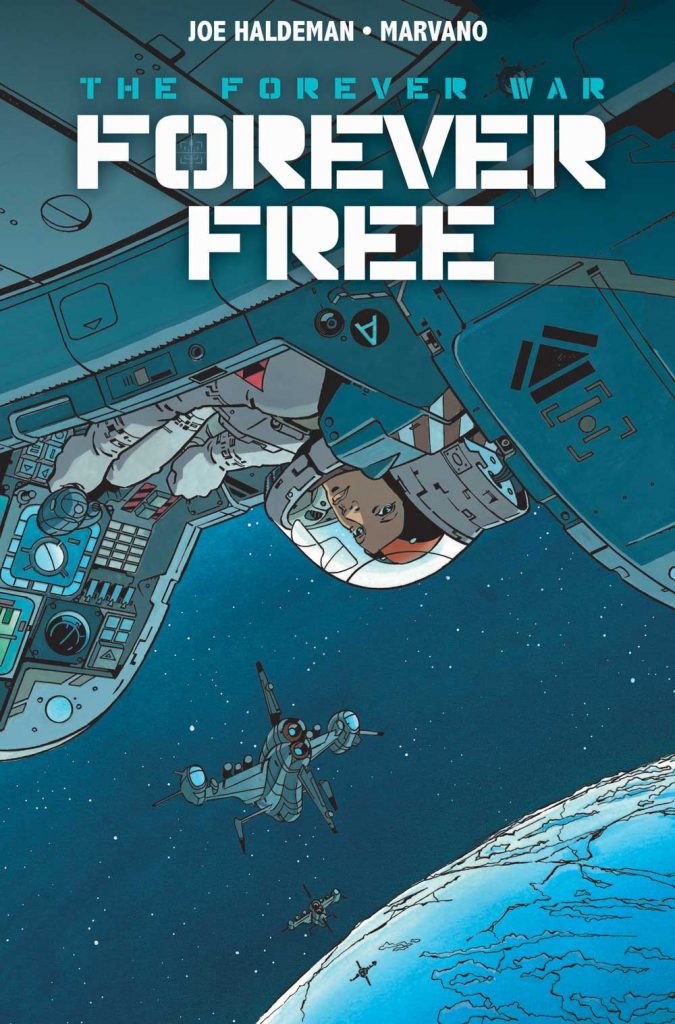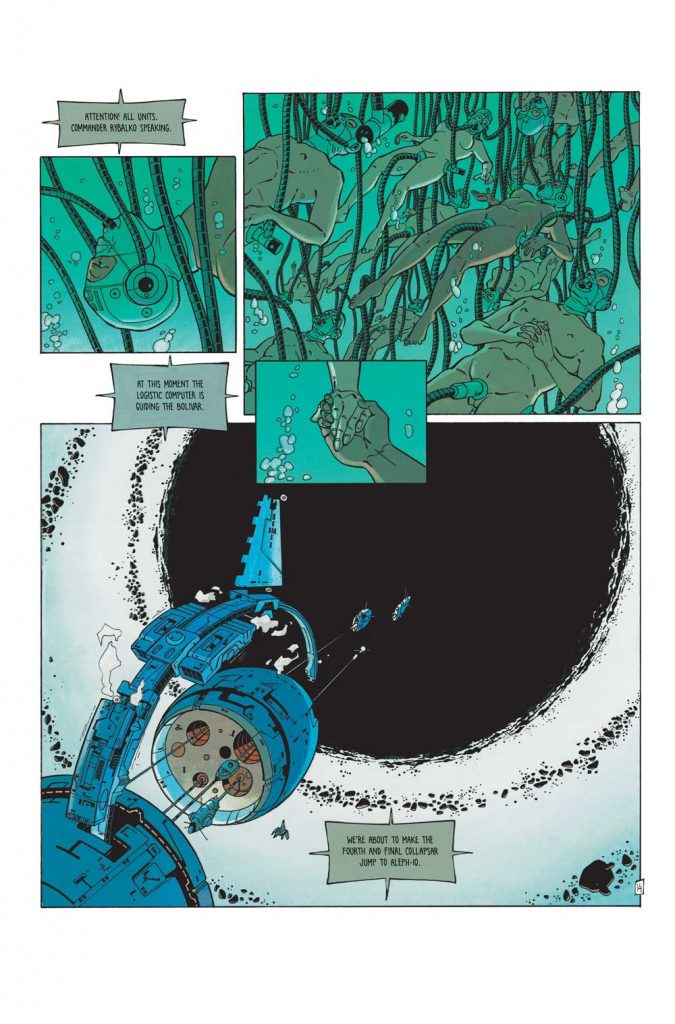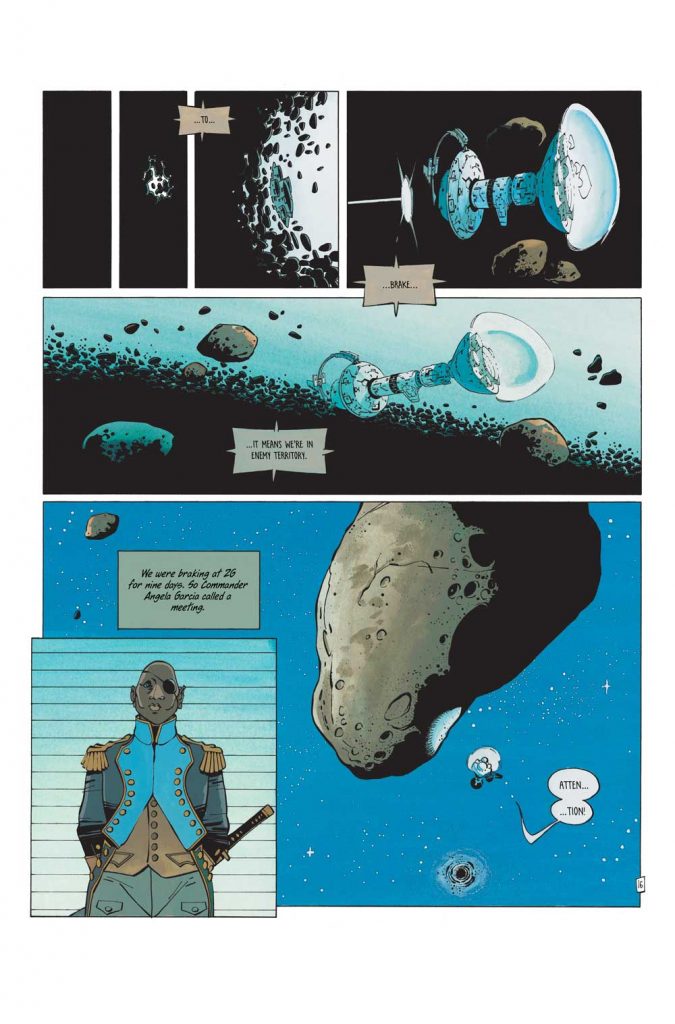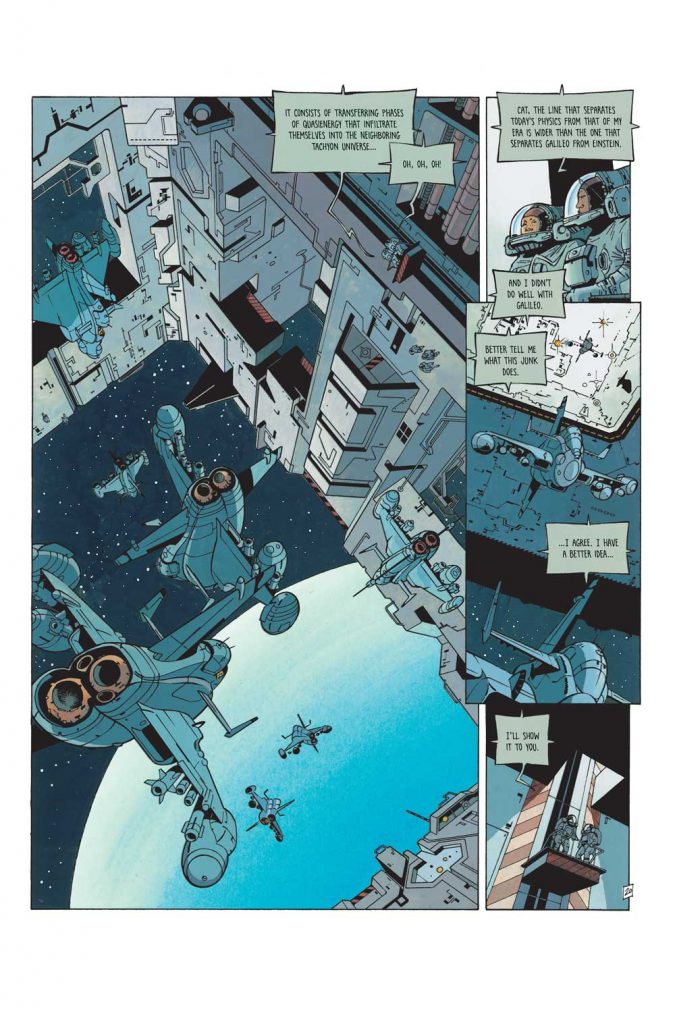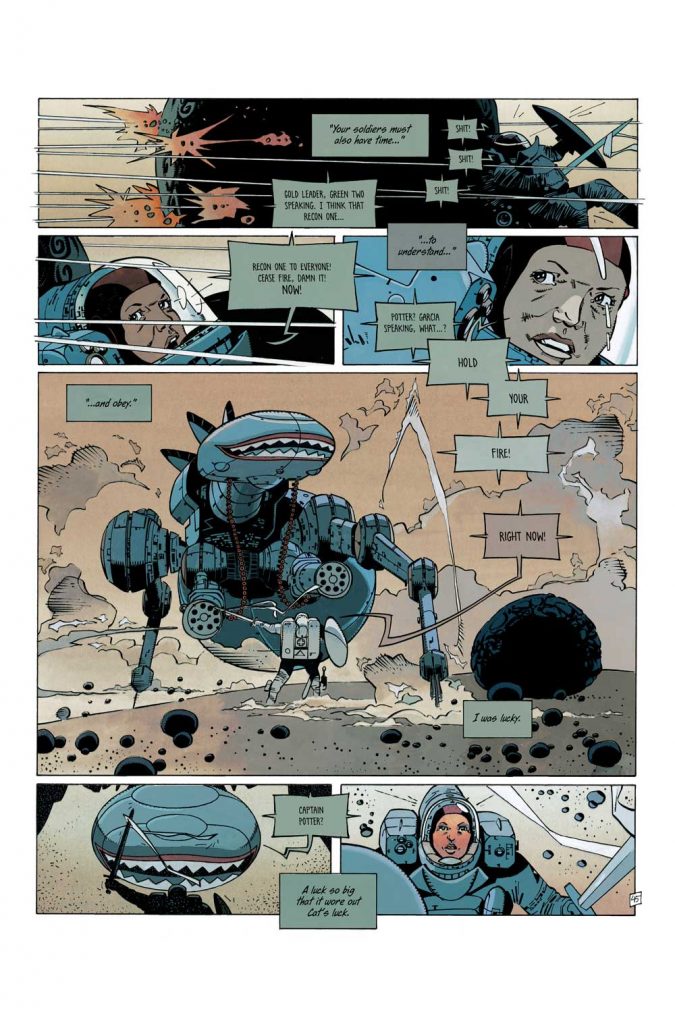(1) END OF AN ERA. Kristine Kathryn Rusch signed off her influential weekly business blog on November 22. “Business Musings: All Good Things”.
…I wasn’t that desparate in 2009 and I’m certainly not that desperate now. As I noted in some recent blogs, my books are all in print. The books of my traditional friends? Not in print at all. Or if they are in print, my friends aren’t making a dime off of them.
It’s discouraging, but as I’ve seen over the past few years, people have dug in. It doesn’t matter that traditional writers now have to get a “real” job to make a living. Or that the changes in indie have made it possible for those of us who understand business to make a good living while writing what we love.
We’ve changed.
The world has changed.
And honestly, I’m not that interested in writing about the publishing industry weekly. There is no publishing industry anymore. There are different aspects of book publishing, all of which fascinate me, and none of which make me want to pontificate for a few thousand words every single week.
Then there’s my writing itself. In the spring, I made a list of the books clamoring to get out of my brain. The series that need finishing right now, the standalones I’ve been dying to write, the books I’ve intended to write since the turn of the century if not longer, as well as the short stories that rise to the top of my to-do list because I read an inspiring article or saw an amazing play.
I will have time to write all of that if I double down on my fiction writing. Or triple down. When I write fiction, I write a minimum of 1,000 new words per hour. The blog takes a minimum of 10 hours per week from idea to page, including the audio (which is maybe 20 minutes of that 10 hours). I love the audio. It’s fun.
The blog, not so much.
In fact it had become such a drag that I put it off until the last minute, and then have to give up even more fiction writing time to get it down.
And while the blog makes me more money per month than someone would earn making minimum wage (not counting all the nonfiction books I get out of it or the other perks), I could make more money if I write three novellas a year, whether I sell them to traditional markets or not.
The blog is self-sustaining financially, but it’s actively costing me money. My earnings as a fiction writer have gone up dramatically in the past fourteen years….
… Thirty dollars per hour writing a blog post that has little resale value or $1000 per hour writing stories that can sell for decades. It’s really a no brainer….
… Except…I do like noting things about the publishing industry, from time to time. Some things catch my attention and I want to discuss them. I will do that on my Patreon page, which I am not shutting down.
I’ll be doing mostly short posts pointing out an article that writers might want to pay attention to, or commenting on some major change. I’m not going to do a long essay, unless I feel inspired….
(2) BUMPER CROP. Slashfilm reveals “Syfy Spent Thousands On Leonard Nimoy And William Shatner Star Trek Ads You Probably Missed”.
…Barry Schulman had been with the Sci-Fi Channel since its start, and he remembers the glory days in detail. He was interviewed for the indispensable book “The Fifty-Year Mission: The Next 25 Years: From The Next Generation to J. J. Abrams,” edited by Mark A. Altman and Edward Gross, and he remembered the production of what was to be one of the more ambitious advertising tie-ins the network could have possibly received. It seems that the Sci-Fi Channel wrote and paid for a series of extended “Star Trek”-inspired interview-style infomercials to be hosted by Leonard Nimoy and William Shatner — Spock and Kirk themselves! — to run after individual episodes.
Sadly, due to poor ratings, the ads were only sparsely seen….
Of course, programming “Star Trek” presented a technical problem. In the late 1960s, when the hour-long “Star Trek” originally aired on NBC, the broadcast ad breaks only totaled about 10 minutes, leaving 50 minutes of show. By the early 1990s, ad time had grown to 16 minutes, leaving only 44 minutes of show. That would mean any new broadcast of “Star Trek” would, by advertisers’ decree, need to be shaved down by six minutes.
Shulman’s solution was to expand the “Star Trek” time slot from a 60-minute span to a 90-minute span, including all 50 minutes of “Trek” as well as whole ad breaks. He’d then pad out the remainder of the 90-minute slot with Shatner/Nimoy intro/outro segments. Brilliant….
… The good news is that you can actually watch all of these bumpers with Shatner and Nimoy on YouTube.
Here’s the video for the original Star Trek pilot, “The Cage”.
(3) FANAC.ORG ZOOM. The next Fan History Zoom session is scheduled for Saturday, December 9 at 2:00 p.m. Eastern. If you would like to join, drop a note to [email protected].
APAS EVERYWHERE – Fred Lerner, Christina Lake, Amy Thomson and Tom Whitmore.
Since the first FAPA mailing in 1937, APAs have been a part of fannish life. There are topic specific apas, local apas, general interest apas, convention committee apas, letter substitutes and doubtless many more. Our panelists, all long time APA members, talk about their experiences with APA life: Why did you join the APA(s)? Did you APA live up to your expectations and why? Tell us about the APAs you’ve been part of, and tell us what makes them unique. (You can tell us about APAs you weren’t part of too!) Talk about the way the members of the APA related to each other, and the nature of that community. Compare the experience of an online community like LiveJournal or Facebook with your APA experience. The Cult was called the “13 Nastiest Bastards in Fandom”. Was it? What feels different about womens’ APAs? Are APAs now obsolete? Would you join a new APA today?
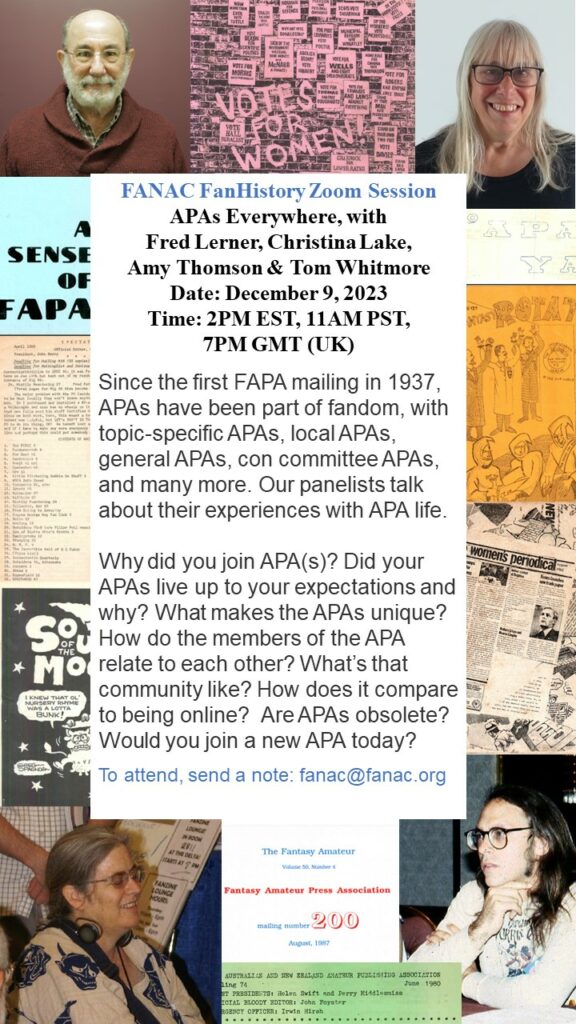
Future Zoom History sessions:
- January 20, 2024 – 2PM EST, 11AM PST and 7PM London GMT – An Interview with Joe Green, fan, s-f writer, NASA spokesman and educator.
- February 17, 2024 – 7PM EST, 11 AM Feb 18 Melbourne AEDT – Wrong Turns on the Wallaby Track Part 2, with Leigh Edmonds and Perry Middlemiss
- March 16, 2024 – 3PM EDT, 2PM CDT, 7PM London (GMT) – The Women Fen Don’t See – Claire Brialey, Kate Heffner, and Leah Zeldes Smith
(4) THE DOG IN THE NIGHT. “Arthur Conan Doyle secretly resented his Sherlock Holmes creation, says historian” reports the Guardian.
Arthur Conan Doyle secretly hated his creation Sherlock Holmes and blamed the cerebral detective character for denying him recognition as the author of highbrow historical fiction, according to the historian Lucy Worsley.
Doyle was catapulted from “obscurity to worldwide fame” after his crime stories began appearing in a magazine in 1891, Worsley writes in the Radio Times. Eleven years later he was awarded a knighthood.
Yet “beneath the surface he was a discontented man”, according to Worsley….
(5) MAJOR SFF EVENTS IN EUROPE IN 2024. [Item by Dave Lally.] The year 2024 has a number of major SF+F events, in Europe, approaching (and all dates given herein are inclusive). And this info is primarily for those from outside the area (and I trust this data is of help).
Here is major SF+F event No 1 (and in the English Midlands of the UK):
EASTERCON 2024 — Fri 29 March – Mon 1 April we have, in the UK, Eastercon / “Levitation” (the UK’s annual National SF Con: Telford, just north of Birmingham).
[And NOTA BENE, post Eastercon on Thu 4 April, there is the very long standing “One Tun” Central London SF fen meeting (Asimov came in 1974). Upstairs (private) bar 1800-> closing. THE BISHOPS FINGER (pub), London EC1A 9JR (for internet maps). Real craft ale/hot food. Order both on Ground floor. Food delivered later up to you. Nearest Tube: Barbican. Nearest Rail : Farringdon. Nearest Elizabeth Line (esp from Heathrow) : Farringdon ( /// Barbican exit!!/// ). All welcome: whether local-to-London or non locals just passing thru!! ]
Nearest UK Rail Station to 2024 Eastercon : Telford {UK Rail Station code: TFC}. There are Express InterCity trains from London Euston (if first visiting there, pre-Eastercon) but one should then change trains at Birmingham International { Station code: BHI } NOT Birmingham New St (and see below why, esp re TfW trains).
Nearest Airport : Birmingham UK [ IATA code : BHX ], then take the free air-rail shuttle from that Airport, to the local, next door train Station : Birmingham International (as above). There, catch a north-bound train to Telford.
[If esp travelling from the States, it might be useful to fly to Shannon or to Dublin and then transfer onto a more local flight to BHX. Why? Cos on the return journey from either of those 2 Irish airports (and thanks to JFK +60 years ago), one pre-clears US formalities at those departure locations (the only two so far in Europe, which have them) and then one leaves one’s US airport as a standard, domestic passenger!]
Especially useful, re UK train travel from { BHI } above, is the long-distance train (run by Transport for Wales: TfW) which always starts from that Rail Station (usual final destination: ABERYSTWYTH, in mid-Wales). So seats to Telford are usually plentily available thereon, at that Station. Other northbound trains from { BHI } may only go to nearby Birmingham New St (in that City’s central area) or onto Wolverhampton, where one may otherwise then have to change trains anyway. And those other trains may get heavily used by Birmingham commuters, who may block seats for longer-journey-travelling passengers.
And UK rail data (times, fares etc) are available on: nationalrail(dot)co(dot)uk. The “green” way to travel..!!
[By the way, that TfW train eventually goes, on splitting much further up the line, past Portmeirion (!), tho that famous SF (Prisoner) site is much, much further away in North West Wales (oh and see LocationCon data I will provide later, re the proposed visit –on Tue 6 August– to that venue, pre- and on the way to, Glasgow Worldcon 2024).]
Eastercon 2024’s website : Levitation 2024 — The 2024 British National Science Fiction Convention.
( And, as always, non-UK fen are very welcome indeed at all SF+F events in Europe, incl the UK’s annual NatSFCon- Eastercon..)
(6) LIKE SAND THROUGH AN HOURGLASS. Inverse is warming up the audience for the release of the next Dune movie on March 1, 2024. “’Dune 2’s First 10 Minutes Restores a Classic Scene From The Book — With a Twist”. Spoilers at the link.
When Dune: Part One hit in 2021, fans immediately noticed one change from both the original 1965 novel and the 1984 feature film. Instead of an opening narration from Princess Irulan, Dune: Part One began with a voiceover from Chani (Zendaya). This inversion smartly centered the story of Dune: Part One from the perspective of the Fremen, at least partially. And now, with Dune: Part Two hitting in 2024, the opening of the film will honor the opening of the original book. But this time, the content of the narration will be decidedly different.
Minor spoilers ahead for the first 10 minutes of Dune: Part Two.
At CCXP 2023 in São Paulo, Brazil, on December 3, 2023, during a Dune: Part Two panel, audiences were treated to several preview scenes, including the first 10 minutes of the movie. Back in 2021, the first 10 minutes of Part One were also teased in special screenings, so this kind of preview seems to now be a tradition ahead of the launch of a new Dune movie.
(7) MISSING A NUMBER. Guardian critic Peter Bradshaw was there: “The Moonwalkers: A Journey With Tom Hanks review – a gobsmackingly huge space spectacle”.
Tom Hanks is the narrator and co-writer of this colossal and immersive multimedia family entertainment event or next-level school trip, about Nasa’s historic Apollo moon landings and the planned new Artemis missions. It’s taking place at Lightroom, the innovative new digital art performance venue at London’s Kings Cross – recently the site of Bigger And Closer, an immersive show about David Hockney.
With the audience gathered in the darkened arena-type area, seated on little upholstered double-stools dotted about, Tom Hanks’s likably folksy and nerdily enthusiastic voiceover booms out telling us that this floor space is the size of Mission Control, Houston. Soon, gobsmackingly huge photo images of the moon’s surface and our own planet Earth are flashed up around the walls, also great film footage of the astronauts bouncing and floating, and all with the cathedral vastness and crystal clarity that they have probably always deserved but never before got from TV screens or even movie screens….… But the strangest omission is the lack of any mention of Apollo 13, the near-disaster rescued with magnificent ingenuity and resourcefulness by the astronauts and ground crews, which Tom Hanks himself almost single-handedly turned into a key moment of American history with his performance as astronaut Jim Lovell in Ron Howard’s film.
Apollo 13 is, after all, why Tom Hanks is narrating this….
(8) NORMAN LEAR (1922-2023). The resume of TV’s Norman Lear even included a few items of genre interest. “Norman Lear, Whose Comedies Changed the Face of TV, Is Dead at 101” in the New York Times.
Norman Lear, the television writer and producer who introduced political and social commentary into situation comedy with “All in the Family” and other shows, proving that it was possible to be topical as well as funny while attracting millions of viewers, died on Tuesday at his home in Los Angeles. He was 101.
In 2003, he helped write a few episodes of “South Park,” the taboo-breaking animated series that was the “All in the Family” of its day. (The show’s creators, Matt Stone and Trey Parker, have said that their bile-spewing character Eric Cartman is partly based on Archie Bunker.)
Mr. Lear turned his attention back to movies in 1982, when he, Mr. Yorkin and Jerry Perenchio bought Avco Embassy Pictures. The newly renamed Embassy Communications released films, including … the acclaimed mock documentary “This Is Spinal Tap” (1984), directed by the “All in the Family” alumnus Rob Reiner.
In 1985… Mr. Lear founded Act III Communications, named to signify the third act of his life. Act III’s most notable productions were two other Rob Reiner films, “Stand by Me” (1986) and “The Princess Bride” (1987)….
(9) MEMORY LANE.
[Written by Cat Eldridge.]
1975 –Joe Haldeman’s The Forever War. Anyone here who has not read Joe Haldeman’s The Forever War should now leave. Really should as I’m going to discuss it.
It was published by St. Martin’s Press forty-eight years ago with the cover illustration not being credited by ISFFB.
It would win a Hugo at MidAmeriCon, plus a Nebula and a Ditmar, and be nominated for a Prometheus Award.
Haldeman said in a Guardian review of 2011 that “It’s about Vietnam, because that was the war the author was in”.
It was sixteen years after Starship Troopers came out and I thought that Haldeman said it was written as a reaction to that novel but the Guardian quote contradicts that. The reviewer there thinks that much of the look and feel of the book comes from Heinlein’s novel but I didn’t feel that was true. Do you?
According to the Authors note to my epub Open Road edition of 2008, “This is the definitive edition of The Forever War.” It looks like a novella titled “You can never go back again” that Bova wouldn’t publish at Analog because he thought it was “too downbeat” and therefore wasn’t in the first edition is now included in the middle section of the novel.
Now for its excellent Beginning…
‘Tonight we’re going to show you eight silent ways to kill a man.’ The guy who said that was a sergeant who didn’t look five years older than me. So if he’d ever killed a man in combat, silently or otherwise, he’d done it as an infant.
I already knew eighty ways to kill people, but most of them were pretty noisy. I sat up straight in my chair and assumed a look of polite attention and fell asleep with my eyes open. So did most everybody else. We’d learned that they never scheduled anything important for these after-chop classes.
The projector woke me up and I sat through a short tape showing the ‘eight silent ways.’ Some of the actors must have been brainwipes, since they were actually killed. After the tape a girl in the front row raised her hand. The sergeant nodded at her and she rose to parade rest. Not bad looking, but kind of chunky about the neck and shoulders. Everybody gets that way after carrying a heavy pack around for a couple of months.
‘Sir’—we had to call sergeants ‘sir’ until graduation—‘most of those methods, really, they looked … kind of silly.’
‘For instance?’ ‘Like killing a man with a blow to the kidneys, from an entrenching tool. I mean, when would you actually have only an entrenching tool, and no gun or knife? And why not just bash him over the head with it?’
‘He might have a helmet on,’ he said reasonably.
‘Besides, Taurans probably don’t even have kidneys!’
He shrugged. ‘Probably they don’t.’ This was 1997, and nobody had ever seen a Tauran; hadn’t even found any pieces of Taurans bigger than a scorched chromosome. ‘But their body chemistry is similar to ours, and we have to assume they’re similarly complex creatures. They must have weaknesses, vulnerable spots. You have to find out where they are.
‘That’s the important thing.’ He stabbed a finger at the screen. ‘Those eight convicts got caulked for your benefit because you’ve got to find out how to kill Taurans, and be able to do it whether you have a megawatt laser or an emery board.” She sat back down, not looking too convinced.
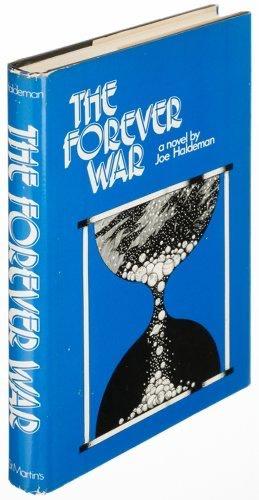
(10) TODAY’S BIRTHDAY.
[Written by Cat Eldridge.]
Born December 6, 1911 — Ejler Jakobsson. (Died 1984.) His first publications, edited with his wife, were The Octopus and The Scorpion in 1939 which were definitely of a pulpish nature.
He has responsibility for Astonishing Stories and Super Science Stories briefly before they shut down production due to paper shortages. When Super Science Stories was revived in 1949, Jakobsson was named editor until the magazine again (and finally) ceased publication in 1951. I’ve never read that magazine. Who here has?
He was an editor for Graphic Books in the 1950s. Jakobsson returned to editing in 1969, when he took over Galaxy and If, succeeding Frederik Pohl. He worked to make the magazines more up to date according to SFE with the help of Judy-Lynn del Rey and Lester del Rey. He left the magazines in 1974 and was succeeded by Jim Baen.
SFE says that “During Jakobsson’s editorship the following anthologies were published (his name did not appear on their title pages): The Best from Galaxy Vol I (anth 1972) edited by The Editors of Galaxy Magazine; The Best from If (anth 1973) edited anonymously; The Best from Galaxy Vol II (anth 1974) edited by The Editors of Galaxy Magazine; and The Best from If Vol II (anth 1974) edited by The Editors of If Magazine.” None of these are currently in-print.
He also wrote a handful of short fiction according to ISFDB, all with Edith Jakobsson. The titles, such as “Corpses on Parades”, “Coming of The Unborn Things” and “Satan’s Toy Monsters”, suggest they were horror writers. These were never gathered into a collection.
(11) COMICS SECTION.
- Speed Bump shows you can’t fool a robot.
(12) FAN MAIL FOR FLASH GORDON. “1980’s FLASH GORDON: Movie of the (Wonderfully) Impossible!” at 13th Dimension.
…It’s a famous story by now—one of the great What If?s in all of pop culture—that in the early 1970s, George Lucas tried to buy the rights to Flash Gordon. His failure to do so led (indirectly) to the creation of Star Wars, and popular entertainment would never be the same. De Laurentiis had first wanted Federico Fellini(!) to direct, then moved onto Nicolas Roeg(!!), finally settling on journeyman director Mike Hodges and screenwriter Lorenzo Semple Jr. (who, besides helping develop the Batman TV series, wrote the 1976 King Kong remake for De Laurentiis). With a budget of $27 million (around $100 million today), De Laurentiis was, as usual, going big.
He’s a miracle!
After a magnificently exciting opening credits scene (scored to Queens’ iconic, propulsive theme music, and peppered with art from the comic strip), we jump right to the action—by the 20-minute mark we’re already on Mongo.
Every sci-fi/fantasy film post-Star Wars bears its influence, visually and tonally. But De Laurentiis’ personality was still so big and forceful that Flash Gordon hits a sweet spot between what a big budget, modern sci-fi movie was supposed to feel like in 1980, and the more idiosyncratic, phantasmagorical, Pop Art feel of the 1960s. Almost everything in Flash Gordon is a practical effect—the retro-futuristic spaceships and weaponry, the Art Deco sets, and the costumes that look mighty uncomfortable for the actors to wear….
(13) SUBMISSION WINDOW. Chris Barkley wanted to make sure I didn’t miss “The Magazine of Horror” by Oghenechovwe Donald Ekpeki, published in 2020 by Apex Magazine. I’m glad he sent the link.
… PS: as an aside, I was wondering and didn’t want to add something so silly to the main body of my cover letter. It’s silly really. The worries of a newbie writer. I heard that your magazine is the greatest horror magazine and will only publish the greatest horror story at a time, and in the lifetime of the published writer, will publish no other story, until the accepted writer expires. Also, that should a story be accepted, the current story is deleted and the displaced writer dies. What is worse, I heard that all those rejected by your magazine also die. This is of course all just silly rumours. I notice that your magazine only has one story on it, despite its ridiculously high pay rate of a hundred thousand dollars per story…
(14) DAY AND NIGHT, YOU ARE THE ONE. “Chronobiologist and Nobel Laureate in Medicine Michael Rosbash: ‘Lack of sunlight during the day is worse than electric lighting at night’” in El País USA Edition.
… Q. One of the things that flies and privileged people have in common is napping and sleeping at night. What is the biological purpose of sleep and of these intermediate pauses during the day?
A. We do not know. Memories are consolidated during sleep and neuronal morphology is modified during sleep. All that happens, but I do not think that is the major purpose of sleep. We do not know what fly and human sleep, for example, have in common. My guess is that it is related to metabolism, such as recharging ATP [adenosine triphosphate, a key energy molecule in cells]. The brain is the largest consumer of ATP; perhaps there is a metabolic need for recharging….
(15) ALL GLORY IS FLEETING. The New York Times tells how “George Santos Uses Cameo Videos to Make, of All Things, an Honest Buck”. (You can view his Cameo videos here: George Santos.) (Though it’s possible Bowen Yang is an even better Santos, as proven by his imitation in Saturday Night Live’s “George Santos Expelled Cold Open” last weekend.)
…Three days after George Santos was expelled from the House of Representatives, he sat in front of a camera to address the American people.
Well, a few American people. The ones willing to pay Mr. Santos — the former congressman who stands accused on federal fraud charges of stealing money from campaign donors for personal expenses — hundreds of dollars a pop on the video app Cameo.
“Hey, Sarah,” Mr. Santos said in one video. “Sometimes work sucks. I mean, let’s talk about bad days, huh? Last Friday wasn’t so great for me, either.”
It was a rare moment of truth for Mr. Santos, who lied to voters and his colleagues about where he went to high school, going to college, being a volleyball star, working on Wall Street, having Jewish ancestry and family ties to the Holocaust and the Sept. 11 attacks, among other things.
There was a time when Mr. Santos expressed regret for some of those falsehoods. His videos on Cameo suggest that time has passed.
“Hey, Harper! I love that you are such a dedicated student at N.Y.U.,” Mr. Santos says in one, before pausing, smirking and chuckling. “You know,” he adds, cocking his eyebrows: “My … not-so-real M.B.A.”
(16) VIDEO OF THE DAY. I don’t think dogs are rules lawyers by nature the way Ryan George makes them out to be in “When Dogs See A Christmas Tree”, but that’s where the humor comes from in this video. Tell the internet to go fetch it for you.
[Thanks to SF Concatenation’s Jonathan Cowie, Mike Kennedy, Andrew Porter, Steven French, John King Tarpinian, Chris Barkley, and Cat Eldridge for some of these stories. Title credit belongs to File 770 contributing editor of the day Peer.]


